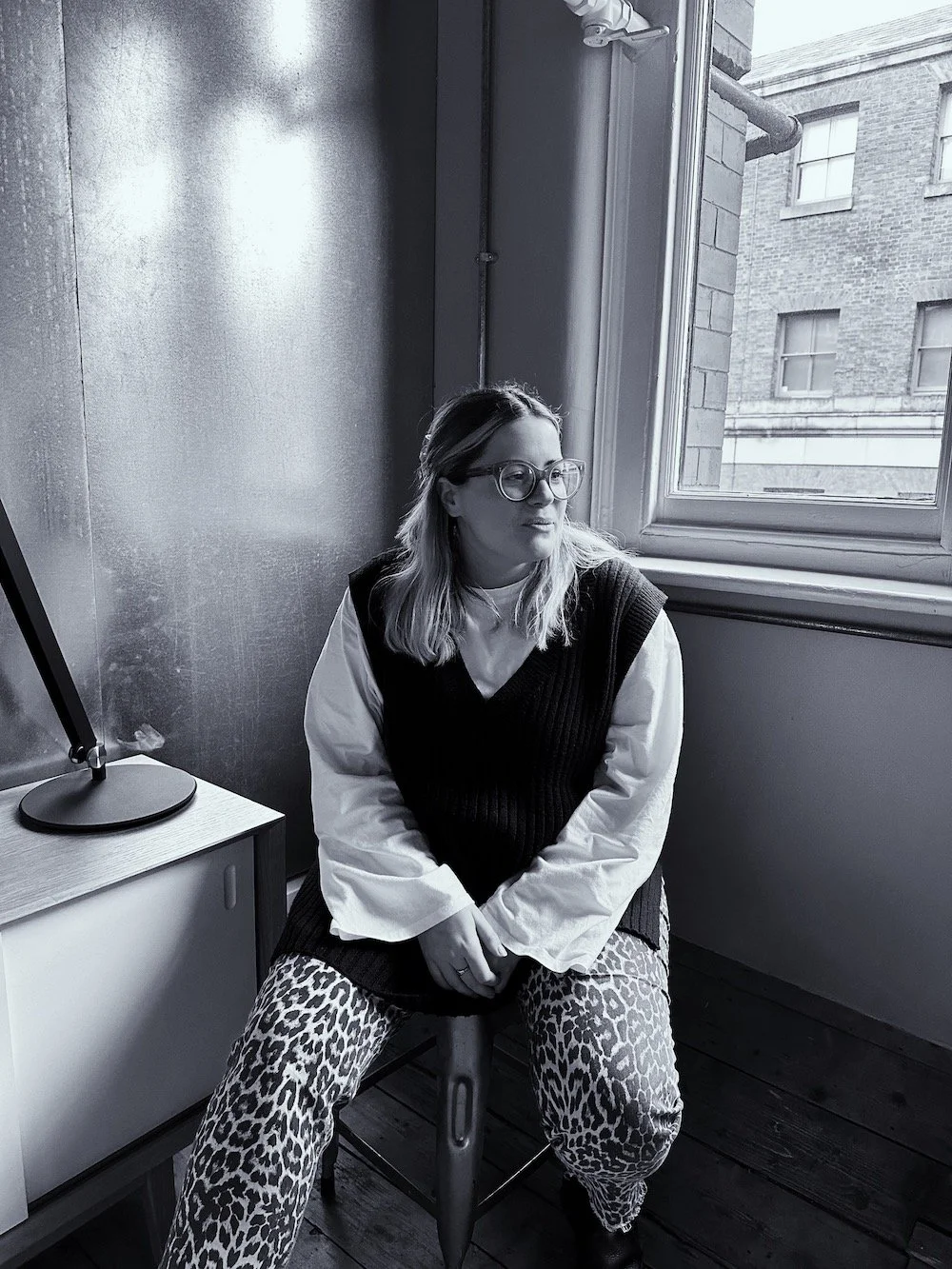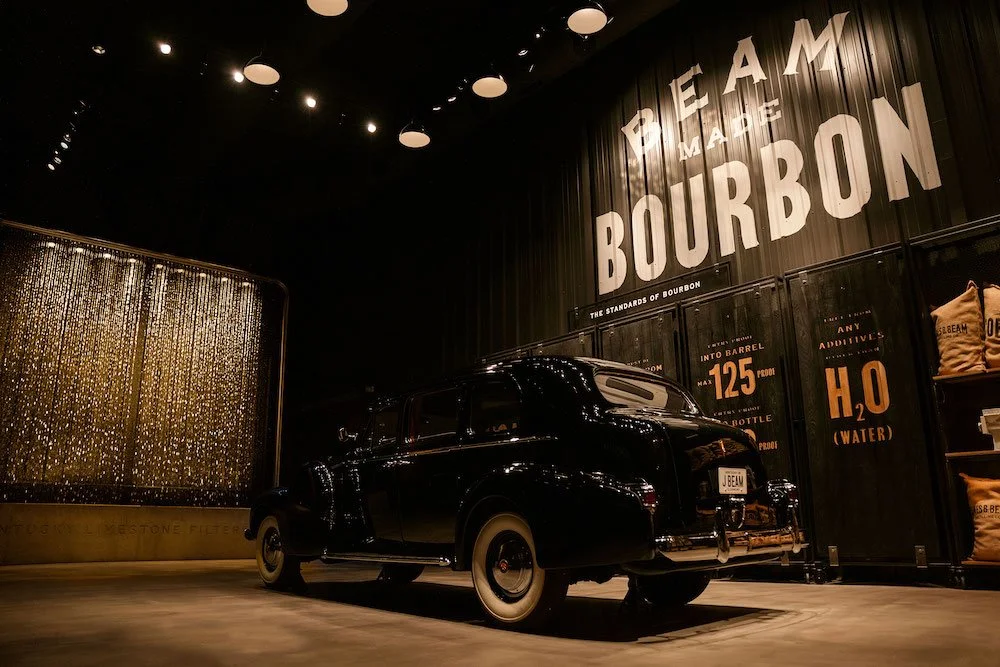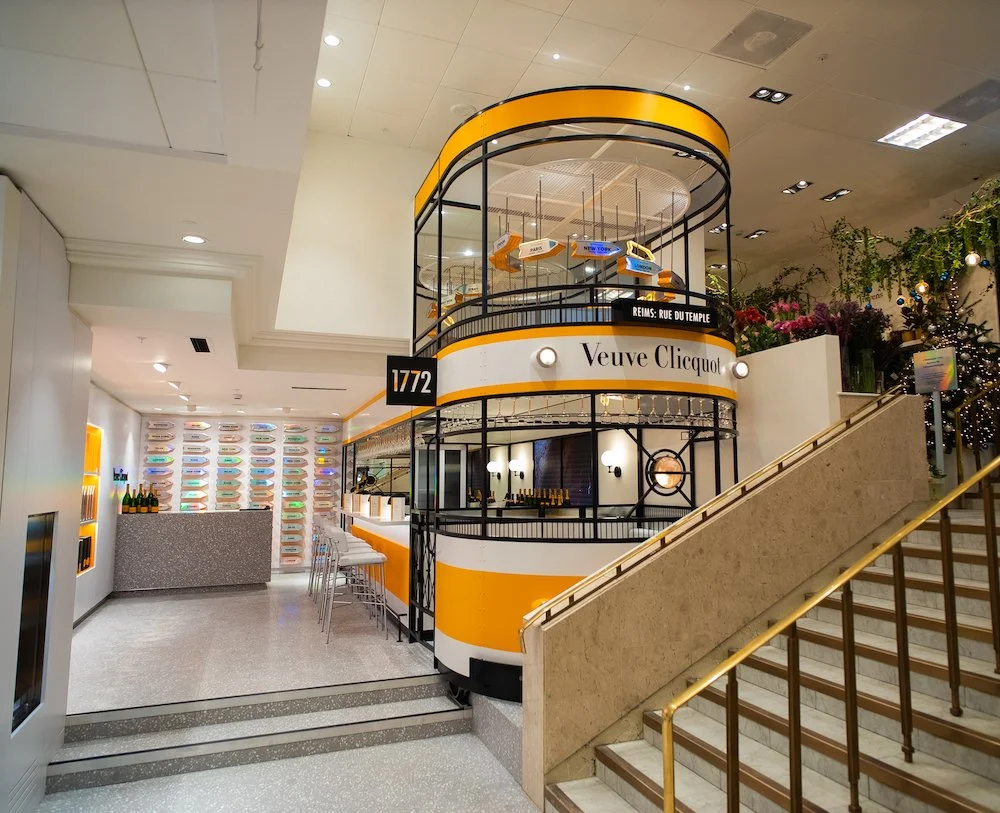Rebecca Reeves: Start Big Then Simplify As Much As You Can
Rebecca Reeves brings the spirit of a brand to life. Images: c/o LOVE
Rebecca Reeves has a cool job. As Senior 3D Creative at Manchester-based creative agency LOVE, she injects retail spaces with escapism, nostalgia, and imagination to transform them into playful, luxurious experiences. Think designing a tram Champagne bar for Veuve Clicquot inside Selfridges in London. Or dialing up Moet & Chandon’s links to British culture by capturing pivotal moments in time, such as the late Queen issuing the brand a Royal Warrant, inside an iconic London phone box.
Most recently, she and her team led the overhaul and rebrand of the James B. Beam Distillery Company’s (JBBDCo) entire 400-acre Kentucky Distillery, which included a new visitor center, immersive bourbon tour, retail store, tasting rooms, 100-seat bar and restaurant, and a brand new visual identity.
While every Kentucky distillery likes to tell the story of how their bourbon is made, LOVE and Beam wanted to do it bigger than the rest. Their story comes to life with a 25-feet-high waterfall, a vintage car representing how Jim himself used to protect his jug of precious Beam yeast —strapped in the passenger seat—and a world first, a cornfall (more on that below).
Safe to say you won't find that anywhere else on the Kentucky Bourbon Trail. That’s always Reeves’s objective, as she shares below: Create an experience people will remember. No idea is too crazy to consider. Start big, then work back from there. And never miss the human moments.
The essence of bourbon is captured in the waterfall and cornfall installations.
For the new Beam Distillery design, what was the biggest challenge?
I’d say the biggest challenge was the installation that we created to represent what goes into making the whiskey. It revolved around a vintage car, with a waterfall on one side, and a double-height cornfall on the other. It was hard to get that right visually. For example, I initially wanted visitors to be able to walk under the cornfall before they head up the stairs. That would be amazing, right? But there were lots of complexities in doing this, like how would visitors in a wheelchair or with a pram have access to this.
Another consideration was how much noise would be made as the corn falls into the pit. We spent a lot of time working with the engineers on the mechanics of the cornfall to reduce this. Again, it’s all about picturing your visitors and the overall experience you want them to have.
I was born in Iowa, so I am familiar with all things corn. But what’s a cornfall?
Haha! It’s similar to a waterfall but with corn. But waterfalls are pretty simple. The water goes through the pipes, falls down, and then it loops back around. We’d used the waterfall to tell the story of why whiskey tastes like it does, which is down to the water having been filtered through limestone. We wanted to mirror this on the other side of the car and show the importance of corn in the process too. It was fun but difficult—corn is not so easy to loop around.
What was your starting point for that storyline?
We started with, What goes into making whiskey? And then, on the other end, how do we add drama to show (rather than tell) what makes the Beam whiskey distinctive. My advice is start big and then simplify as much as you can – pick out what the key elements are in the telling of the story. You want visitors to be able to take in the information quickly and effortlessly. It also helps keep the tour guides engaging and authentic, giving them little talking points along the way rather than having to have huge scripts.
The new Jim Beam distillery is the result of many conversations with the founding family.
How do you and your team come up with ideas like this that both fit what the client wants, while also pushing the boundaries to deliver the unexpected?
Our view is that generally anything goes, and we welcome ideas from anyone—both our directors and juniors. I have worked at places before where they have said there are too many people in these meetings but we’re not like that. We want our juniors in these because they bring fresh ideas the rest of us might not see. There is so much value in ideas, and in coming together to create a safe space where no idea is too stupid or expensive. You can refine later.
LOVE also designed a tram Champagne bar for Veuve Clicquot inside Selfridges. in London. Cheers to that!
How might AI impact your work?
One benefit of AI for our industry is using it to sell in our concepts. There’s been so many times, early on in projects, when you just can’t find the right reference imagery to sell in your ideas. AI allows us to quickly generate these so we can give clients a more accurate visualization.
But beyond that, while AI is growing quickly, it misses the human touch. All of our work starts by listening to our clients' stories and picking out what the special moments are. At the beginning of the Beam project, we were introduced to Fred Noe, master distiller for the Beam brands and great-grandson of Jim Beam. His charismatic telling of old family stories meant that you didn’t have to be a whiskey enthusiast to find them interesting and that’s what we replicated in the tour. AI misses these touchpoints. Yes, it seems so easy but there’s no substance behind it.
When you look more broadly at experience design, where should people double down?
Collaborations with artists and other brands, or even sub-brands, that link to an experience for people, rather than purely selling a product. Take Gucci Vault, the brand’s experimental online space. From special vintage items to web-3 collectibles, the space allows Gucci to go beyond the confines of its House. It’s an avenue for it to behave in different ways, to be more playful and try out new things. Its Art Space currently holds an immersive NFT exhibition that depicts contemporary artists’ visions for Gucci over the next hundred years. In doing so, it’s engaging with fans in a different way than before and it’s this level of unexpectedness that will keep people coming back.
If you’d like to read more from Creative Factor, subscribe to our newsletter. Or looking to tell your brand story? Introducing Creative Factor’s Storytelling Studio.
Plus, more great reads, right this way…






